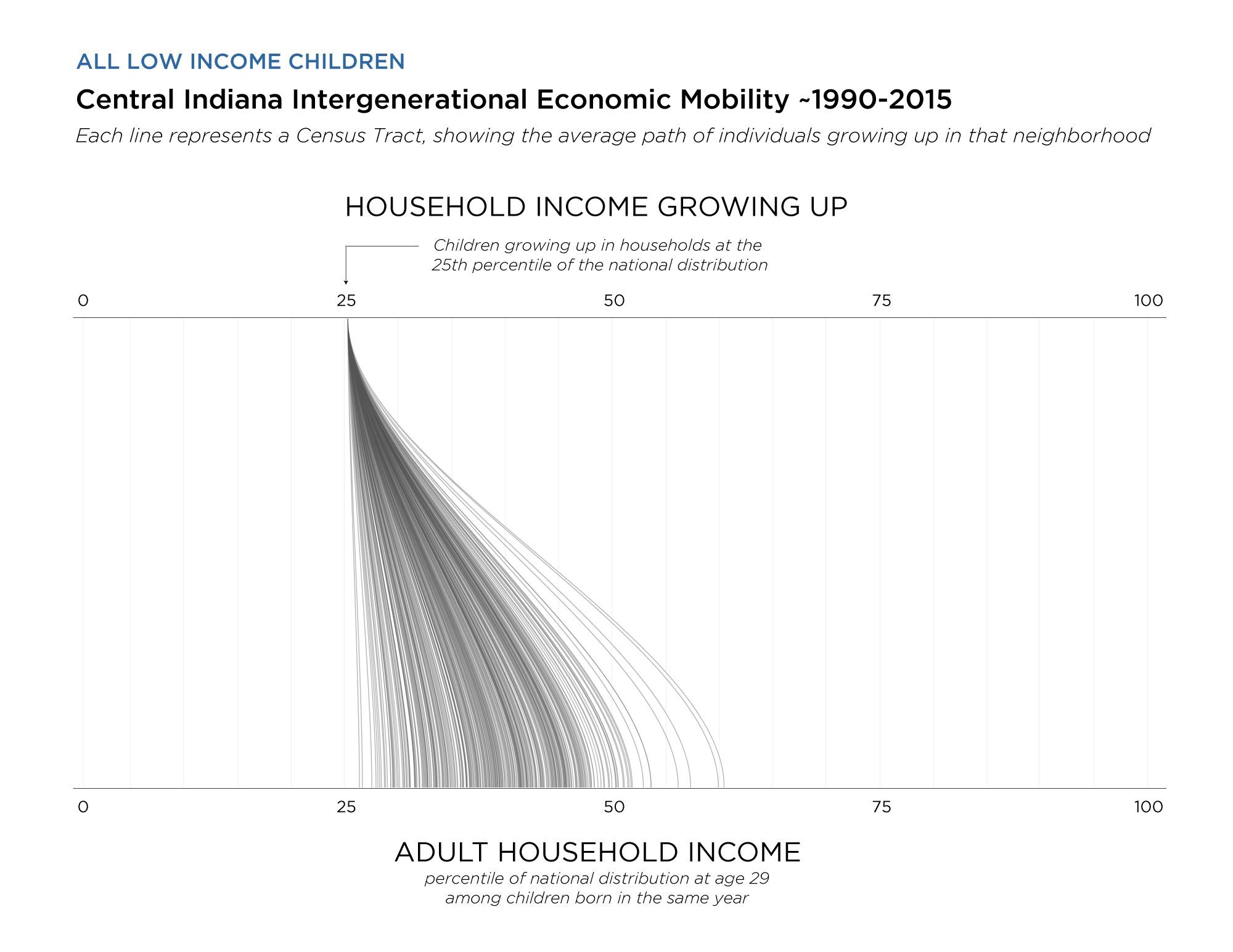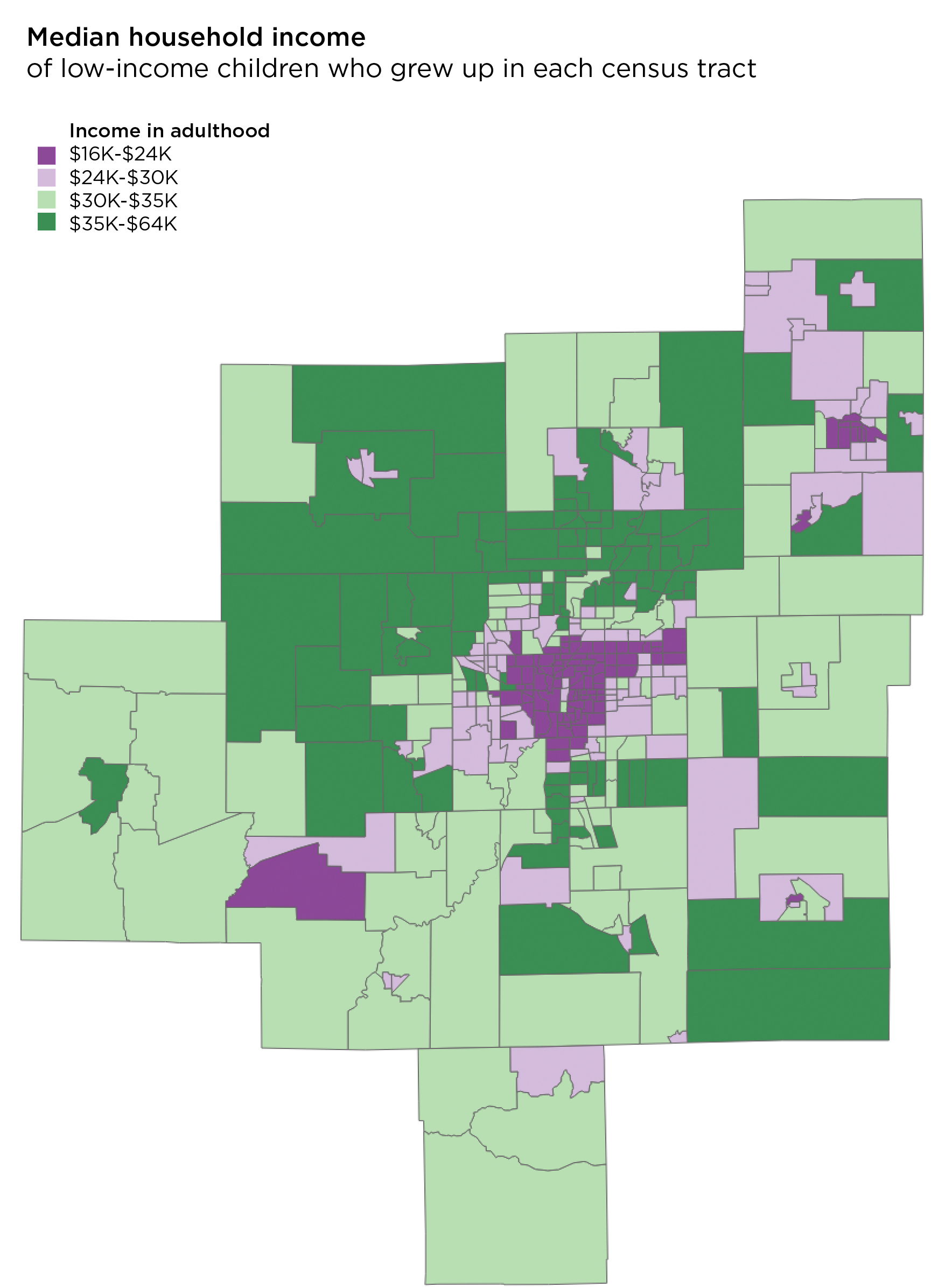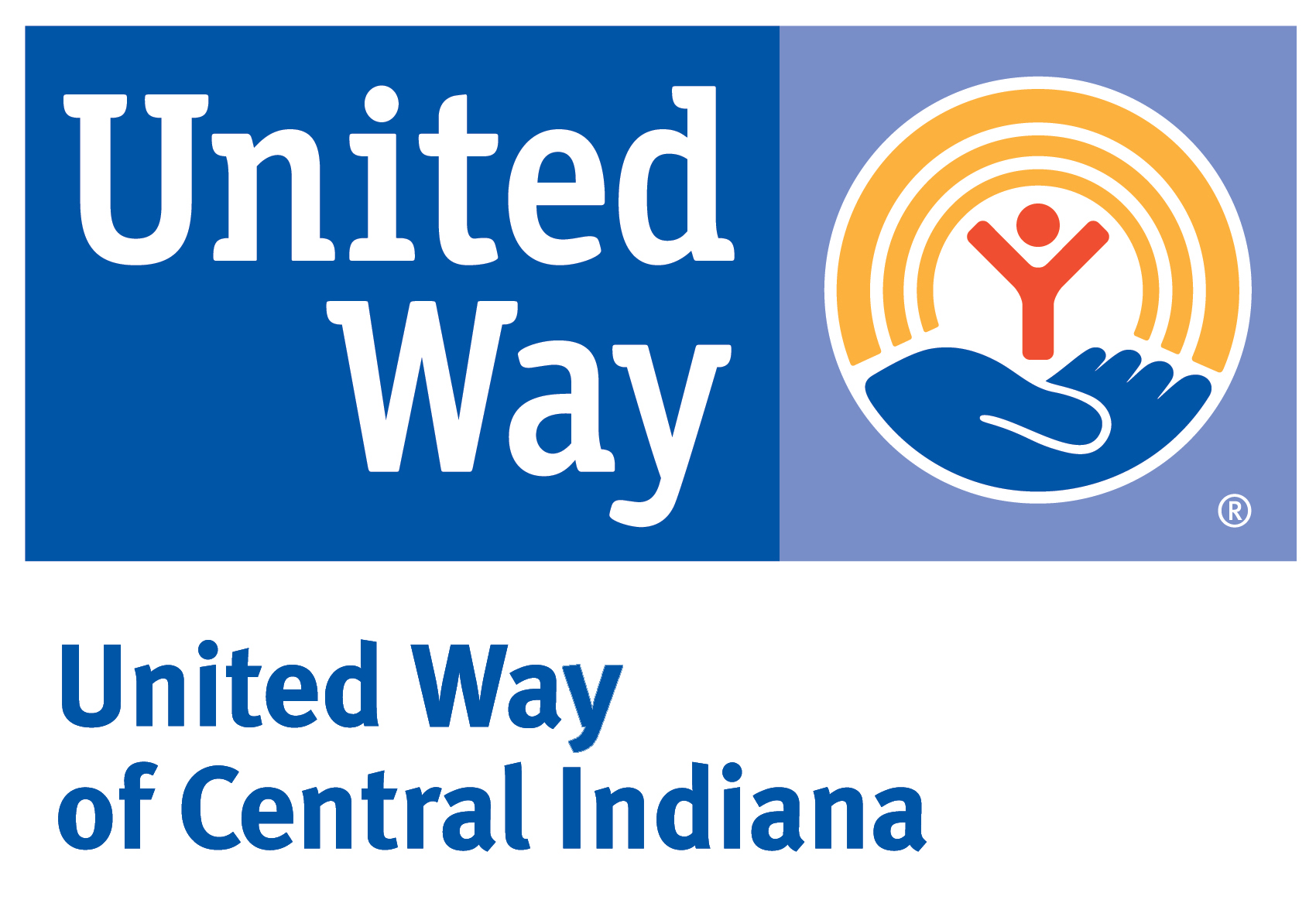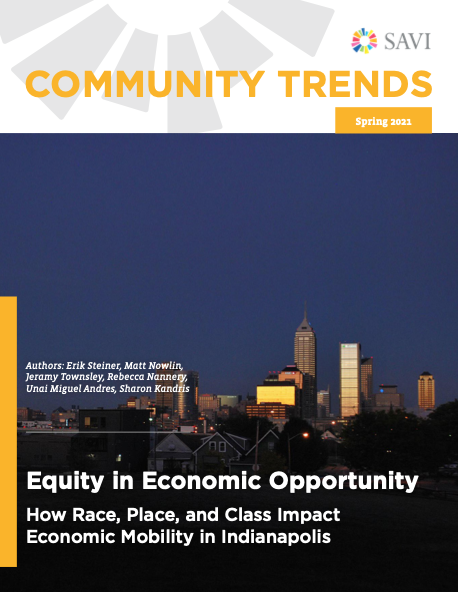Equity in Economic Opportunity
SAVI Talks - March 25, 2021Building on research by Harvard’s Raj Chetty and his team, we are developing new insights and highlighting findings about opportunity in Indianapolis neighborhoods. The average child born into a high-income family in Indianapolis earned $50,000 in household income when they were about 35. Children born to low-income families grew up to earn $27,000.
- Indianapolis’ level of opportunity for low-income children is lower than all but two of the largest U.S. cities. Only Atlanta and Charlotte have worse outcomes than Indianapolis.
- The average Black child born in Indianapolis earns $9,000 less than the average White child. There is a spatial disparity too: In many neighborhoods, children who grew up there earn less than $20,000 per year. In other neighborhoods, children born at the same income level grow up to earn $35,000 or more.
- Neighborhoods that are segregated clearly have lower opportunity outcomes for children. People born into Redlined neighborhoods have less economic opportunity, even when controlling for their parents’ income.


Articles and Story Maps
Explore other research and interactive content we have developed around equity.
Who is in the Marion County Jail? Exploring Length of Stay through an Equity Lens
We analyzed more than 283,000 bookings into Marion County’s jails between 2013 and 2021 to discover how many people are in jail, the characteristics of those in jail, and how long people remain in jail. This dataset spans nine years. In that time, state laws changed...
The State of Tenants in Central Indiana
Indiana Senate Bill 230 would have required landlords to make necessary repairs to their properties. We examine the renters impacted by the bill’s failure.
Modern Redlining in Indianapolis?
Our analysis of one million loan applications since 2007 shows that, even when income and debt are the same, having a Black applicant on the loan increases the odds of being denied by 2-3X, and applying for a loan in a historically redlined neighborhood increases the odds of denial by 50 percent.
A Deep Dive into Affordable Rental Housing
New data shows the number of subsidized rental homes in Marion County is stagnant, while the need for units affordable to extremely low-income households is large.
Our Changing City, Block by Block
From suburban growth to revitalization and displacement, regional change is driven by block-to-block changes. These maps are the most detailed information available from the 2020 census.
Equity and Criminal Justice: The Cradle to Prison Pipeline in Indianapolis
This report examines a concept called the “cradle to prison pipeline.” It is a review of some of the basic statistics at each stage of this pipeline: childhood, school, juvenile justice, early adulthood, and imprisonment. For each stage, we present basic trends and...
Worlds Further Apart
In our updated analysis of 104 ZIP Codes in the metro area (2014-2018), we identified the northern suburb of Fishers as our longest living community and just 17 miles away, within the Indianapolis city limits, is the shortest living community within the metro area....
The Lasting Impacts of Segregation and Redlining
80 years after the federal government encouraged lenders to consider “neighborhood characteristics” like race in their lending decisions, redlining and segregation have a measurable impact on economic opportunity, health outcomes, the environment, and violence.
Equity in Economic Opportunity: How Race, Place, and Class Impact Economic Mobility in Indianapolis
Children born to low-income families in Indianapolis in the 1980s grew up to earn less than their peers in almost any other large city. The ability of children to move above the economic status of their parents is influenced by the parents’ income, demographics, and...
Animated Map of New U.S. COVID-19 Cases Over Time
The incidence of new COVID-19 cases has not been the same over time throughout the country. This animated map shows the 7-day average of new COVID-19 cases per 100,000 people. This allows us to view the spread and incidence of the virus regardless of population...
Authors
Sharon Kandris
Associate Director,
The Polis Center
Jay Colbert,
Data Manager,
The Polis Center
Jeramy Townsley,
Visiting Research Analyst,
The Polis Center
Matt Nowlin,
Research Analyst,
The Polis Center
SAVI Talks Panelists
Patrice Duckett
Exec. Director
Fay Biccard Glick Crooked Creek Neighborhood Center
Amy Nelson
Exec. Director
Fair Housing Center of Central Indiana
Pamela Ross
VP of Opportunity, Equity & Inclusion
Central Indiana Community Foundation
SAVI Talks Moderator
Jill Sheridan
Health & Science Reporter
Indiana Public Broadcasting, WFYI
Event Partners





